Patent MarketPlace: Packaging Patents for Sale
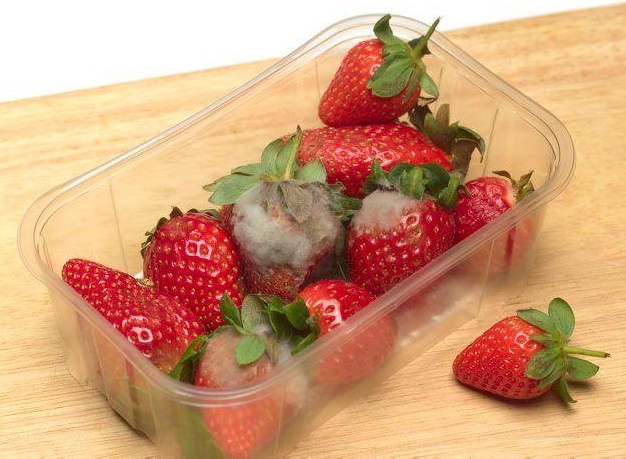 Size-Adjustable Food Containers (Fossen): U.S. Patent No. 10,569,944
Size-Adjustable Food Containers (Fossen): U.S. Patent No. 10,569,944
The enemy of food is air. The reason that canned foods like soup last so long is because the can is vacuum-sealed so there is no air to come in contact with the contents of the can. When wrapping up leftovers, the key challenge is limiting the amount of air in the container – the less air, the longer the food remains fresh and edible. There are plenty of food containers with lids that seal air tight. The problem is that they lock in all that air. What is needed for truly effective food storage is a way to remove all the space and, therefore, all that air.
This patent addressed exactly that challenge. This patent creates a food storage container in which the bottom of the lid touches the food and the rest of the lid adapts to the volume in the container so all air is pushed out. Mom can use the same container to store two pancakes or eight pancakes, a half bowl of stew or a half pot of the stew, or one serving of pasta or six servings of pasta. You get the idea. The food to be stored is put into the container, and the lid’s accordion-like sides act as a spring, squeezing the air out of the container as the user pushes down on the lid until it clicks. It compresses to exactly the right height of what is being stored – with no additional air trapped in the container to spoil the food! The food will not dry out or get moldy. It will keep the aroma of coffee, tea or spices. Lids based on this patented technology can be made in a variety of shapes and sizes from a variety of resins. The containers can be made of the same material or glass. They would be dishwasher and microwave safe and ideal for the freezer. When ready to be reused, the lid retracts back to its original position. In addition to storing foods, it can be used for medical and chemical items.
U.S. Patent No. 10,569,944 for a “Container with adaptive storage volume” could be used by any packaging manufacturer to offer the next-generation in effective, affordable, and practical food storage containers.
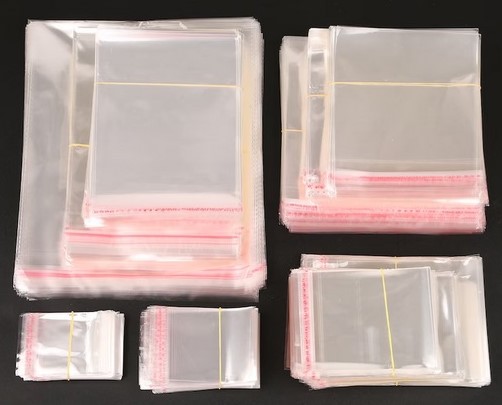 Multiple-Pocket Re-Closable Plastic Bags (La Fuente): U.S. Patent No. 8,870,458
Multiple-Pocket Re-Closable Plastic Bags (La Fuente): U.S. Patent No. 8,870,458
Re-closable plastic bags have been around for years. From sandwich bags to much larger freezer bags, they can be used to contain virtually anything. The latest Ziploc® bags open and re-seal easily so they can be used many times before they are tossed out. However, there is a significant problem with the current generation of re-closable plastic bags – they come with just one compartment. You cannot put a sandwich and a pickle in the same bag or the pickle juice will run and be soaked up by the sandwich. Yuck. And a manufacturer providing nuts, bolts, washers, or other components with its products must put each group of parts in separate bags.
This patent creates a multiply-chamber, re-closable, disposable, plastic bag. The bag can have as many compartments as needed, and each compartment has an easy-to-open and easy-to-reseal opening. The patent includes not just the design but the technology for manufacturing multiple-pocket bags. This patent can be used to create a sandwich-and-pickle or sandwich-and-chips resealable bag. Or a three-pouch bag that holds a product and two alternate dressings, and the user selects what he or she wants. Or a multi-compartment bag that holds an entire meal! Manufacturers of furniture and other items that need to be assembled can provide a single bag with pockets for each set of nuts, bolts, screws, washers, connectors, or other components needed to assemble the product. In addition, each pocket can be labeled to identify what is in it. Applications for this invention are limitless!
U.S. Patent No. 8,870,458 for a “Multiple pocket reclosable disposable plastic bags and methods for making them” would enable any plastic bag manufacturer to offer its customers the next-generation in re-closable packaging.
Ziploc is a registered trademark of S. C. Johnson & Son, Inc.
 Next-Generation Corrugated Cardboard Carton (Innovative Design Concepts): Eight U.S. Patents and Two U.S. Patent Applications
Next-Generation Corrugated Cardboard Carton (Innovative Design Concepts): Eight U.S. Patents and Two U.S. Patent Applications
We’ve been using cardboard boxes for over 125 years. The steady growth in e-commerce has led to increased sales of corrugated cardboard cartons for the last two decades, a trend that will continue into the foreseeable future. While cardboard boxes are economical and practical, they have limitations. They are not very strong when they are required to carry heavier content, and they have to be taped shut. Surprisingly, NO significant improvements have been made to the cardboard box for over a century. Maybe it’s time for a next-generation cardboard carton that is more durable.
That is exactly what this extensive portfolio does. It creates a corrugated cardboard container that is many times more durable than the current generation of boxes, and is specially designed to hold large quantities of bulk material. It is manufactured and shipped flat, like the current generation of cartons, but it takes a single employee just a few seconds to assemble the box, and its network of interlocking panels and tabs eliminates the need to use adhesive tape to hold the box together. Conventional boxes bulge when they are full of bulk content, a problem totally eliminated by the eight-sided design covered by this portfolio. In fact, this portfolio creates the first corrugated cardboard box that can hold an entire pallet of bulk material, so it is referred to as a “pallet container.” The portfolio also includes two patents that cover a “reverse tuck lock” that can be used for closing conventional boxes, trays, and specialty containers.
Patent Portfolio
- U.S. Patent No. 9,827,732: Instant set-up bulk container
- U.S. Patent No. 10,160,568: Pallet container
- U.S. Patent No. 10,220,588: Instant set-up bulk container
- U.S. Patent No. 10,364,058: Reverse tuck lock
- U.S. Patent No. 10,889,080: Instant set-up bulk container
- U.S. Patent No. 10,954,024: Reverse tuck lock
- U.S. Patent No. 11,161,645: Pallet container
- U.S. Patent No. 11,440,282: Fixer for handheld, portable, mobile device
- U.S. Patent Application 20230074618: Instant set-up bulk container
- U.S. Patent Application 20220055791: Pallet container
Any manufacturer of corrugated cartons can use this portfolio – or selected patents in the portfolio – to create a next-generation pallet container that securely transports large quantities of bulk product. See it in action here: Video #1 and Video #2
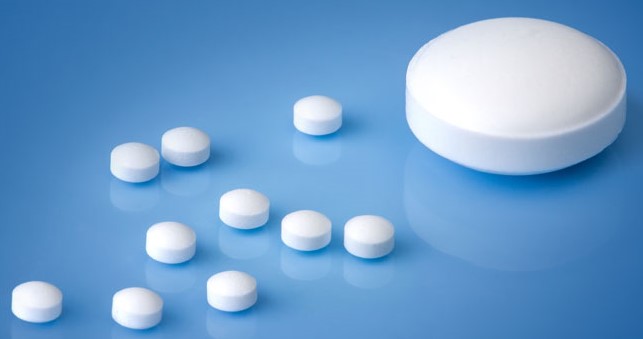 Mini-Tablet Dispenser (Balda Medical): International Patent Portfolio
Mini-Tablet Dispenser (Balda Medical): International Patent Portfolio
The new mini-tablets in which many drugs are being prescribed – drugs for leukemia, epilepsy, and heart disease are just three – combine the advantages of solid and liquid formulations. They are easy to swallow and provide an accurate dosage, but do not carry the risk of over- or under-dosage that liquids present.
What is needed is a dispenser specifically for this new generation of mini-tablets, and that what this international patent portfolio creates. The dispenser covered by this portfolio stores and dispenses one mini-tablet at a time without breaking or crushing tables in the process. It has an activation lock to prevent misuse. Its rotational design insures controlled dosage of the mini-tablets it holds and it provides visual control of the dosage. The unit is easily locked to secure the tablets, and it is compact enough to be easily stored in a pocketbook.
Patent Portfolio
- U.S. Patent No. 10,099,841: Dispensing device for solid portions and method for dispensing solid portions
- European Patent 2855303: Dispensing device for solid portions and method for dispensing solid portions (Valid in Switzerland, Germany, Spain, France, Great Brittain, and Italy)
- U.S. Patent No. 9815611: Device and method for singularized dispensing of solid portions
- European Patent 3016885: Device and method for dosing pill-shaped elements (Valid in Switzerland, Germany, Spain, France, Great Brittain, and Italy)
- India Patent 444126: Device and method for dosing pill-shaped elements
Any manufacturer of pharmaceutical packaging could use this portfolio to introduce the first packaging product specifically designed to meet the needs of those with a prescription drug in mini-tablet form.
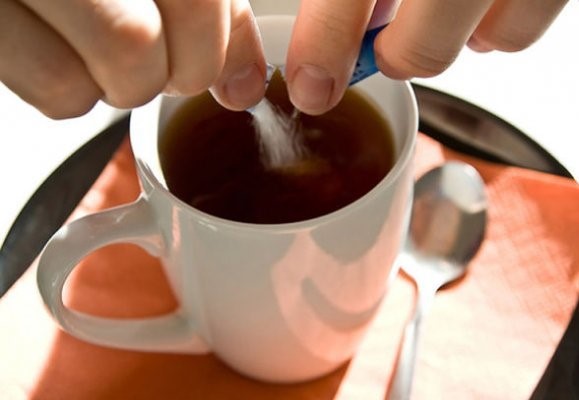 Single-Serve, Disposable Packet (Halaida): U.S. Patent Application 20230032484
Single-Serve, Disposable Packet (Halaida): U.S. Patent Application 20230032484
In a post-pandemic world, we are more cautious than ever about what we touch and what already touched what we touch – items like sugar, salt, pepper, catsup, mustard, and other condiments. Most of these are now dispensed in packets, but it takes two hands to open these packets when two hands – like when you are driving – are not always available. Or think about how awkward it is to open a disposable shampoo packet in a hotel when your hands are wet. There must be a way to put a single-serving or single-use amount of a dry or liquid product in an easy-to-open packet. Well, there is.
This patent application covers a packet that can hold sugar, salt, pepper, or other dry powders, or liquids like coffee creamer or shampoo, in a pre-measured amount, and that is super-easy to open with one hand. The user just squeezes the packet with his or her thumb and finger, and the contents pour out the bottom. The user then tosses the empty packet in the trash. These patented packets can be made from paper so they are biodegradable, or they can be made from BOPP (biaxially oriented polypropylene) film or from another biodegradable plastic if they are holding a liquid. Applications for these patented packets are endless – seasonings and condiments, honey and syrup, shampoo and conditioner, soap and hand sanitizer, detergents and cleaners, creams and lotions, and many more. The design is 100% scalable, so they can be designed to hold from a few grams to several ounces of content – whatever amount is needed for a single use of the product.
U.S. Patent Application 20230032484 for a “Single-serving disposable container” would enable any packaging manufacturer to offer its customers a new, unique, and benefit-rich packaging alternative.
 No-Waste Liquid Packaging (Dolos): U.S. Patent No. 9,248,937
No-Waste Liquid Packaging (Dolos): U.S. Patent No. 9,248,937
We’ve all been there. We buy a large bottle of shampoo, conditioner, lotion, body wash, or other liquid with the pump-top dispenser. And it works great until we get down to the last inch or so of liquid in the bottom of the bottle. The stem on the pump-top dispenser does not reach the bottom of the bottle, so there is an inch or so of unused – and unreachable – shampoo, conditioner, lotion, body wash, or other product that goes to waste at the bottom – unless we unscrew the pump-top, pour it out manually, and make a mess in the process. How do we save that last inch of unused, unreachable product in the bottom of the bottle?
This patent solves this problem by creating a plastic bottle with a twist-off bottom. When the pump-top dispenser can no longer reach the fluid that is left in the bottom of the bottle, the user simply twists the bottle and the bottom portion separates from the top. There is a flap with a spout that the user folds down and snaps into place, creating a smaller bottle of shampoo, conditioner, lotion, body wash, or other liquid. This smaller container can simply be used until all the product is gone, or it can become a smaller, reusable travel-size container that the user pops into his or her suitcase or takes to the gym or health club to use there. The new, smaller container meets TSA standards so it can be included in luggage or take-on when the user flies.
U.S. Patent No. 9,248,937 for a “Get your money's worth dispensing canister” will enable any packaging manufacturer to offer the first liquid bottle for which there is NO wasted product for the user!
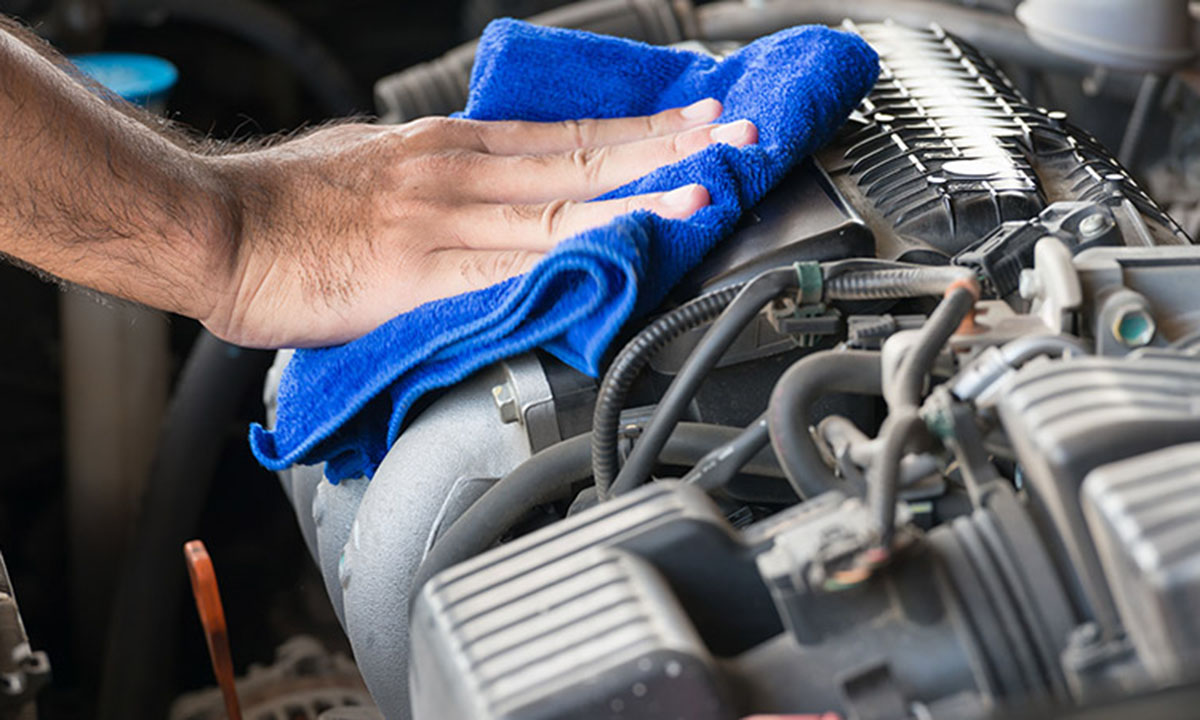 No-Spill Bottle Cap (Vection): Three U.S. Patent Portfolio
No-Spill Bottle Cap (Vection): Three U.S. Patent Portfolio
We’ve all been there. We need to add oil to our car, truck, garden tractor, or lawn mower, and we end up spilling some of the oil on the engine. We wipe off as much of the spilled oil as we can, but when the engine gets hot we’re faced with a smoky, stinky mess. Yes, we could use a funnel to pour in the oil — but where did we put that funnel? Wherever it is, there’s a messy pool of oil below it from the last time it was used. There must be a neater, cleaner, simpler, smarter way to add oil to an engine.
There is! This innovative portfolio creates a no-spill cap for bottles that completely eliminates the gurgling, spillage, difficulty, drippage, and overall mess associated with adding oil to any receiver. It consists of a dust cap that is removed first, revealing a second cover cap that holds a nozzle - at this point, the bottle is still closed. The user simply inverts the container and places the cover cap into the opening, receiver, or valve cover where the oil is to be added. When the user twists the cover cap, it opens and permits the nozzle to let oil flow (with completely even air exchange) directly into the engine with NO spills. The user then twists the cap back to shut off the flow, removes the bottle, and replaces the dust cap. Done! No funnel. No spills. No gurgling. No mess. No aggravation.
While the dispensing of motor oil into an engine is the most obvious application for this invention, it can be affixed to any container from which the user pours liquid into a smaller container. Notable examples would include detergents, cleaners, polishes, disinfectants, and other liquids which are purchased in bulk-sized bottles and then poured into smaller spray bottles. This portfolio consists of U.S. Patent Nos. 9,981,786; 10,494,153; and 11,077,994 for a “Method and apparatus for controlled transfer of fluid.” This portfolio would enable any packaging manufacturer to introduce and own a brilliant new market segment – smarter bottles that simply do not make a mess!
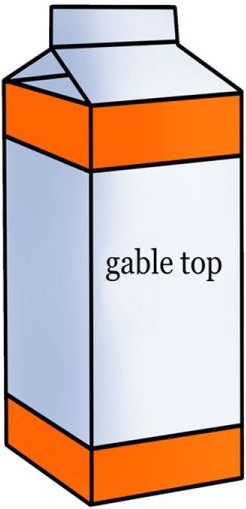 Biodegradable Gable-Top Carton (Bertone): U.S. Patent No. 9,399,536
Biodegradable Gable-Top Carton (Bertone): U.S. Patent No. 9,399,536
Gable-top cartons have been around for over 50 years. They were originally designed to hold milk – a lighter and cheaper alternative to glass – but have since been used to hold many other beverages and dry products. The first significant innovation in gable-top cartons was to replace tearing open the top and folding it back into place with screw-cap access that created a more tightly closed container and one that is spill-proof. The problem with the screw cap is that is plastic and, therefore, is NOT biodegradable. The packaging industry and American consumers are looking for biodegradable alternatives to plastic. That is why McDonalds just switched from plastic to paper straws throughout its network of locations.
This patent takes gable-top cartons to the next generation by eliminating the screw cap and replacing it with a two-piece snap that holds the two sides of the gable top together. When the snap is opened, the two sides of the gable top fold back to open the carton. To close the container, the two top halves are folded back, and the snap is snapped shut to hold the two halves in place, creating a much tighter closure without the expense and plastic of a screw-cap. A gable-top container based on this patented design can be made from biodegradable content – NO plastic – to create a far more environmentally friendly container for milk, juice, and other products!
U.S. Patent No. 9,399,536 for a “Closure clasped gable-topped food carton” will enable a packaging manufacturer to offer the next generation of biodegradable gable-top cartons. While this new design can be used for liquids, it can also be used to package sugar, salt, pepper, baking powder, baking soda, rice, oats, granola, nuts, berries, seeds, bacon bits, croutons, chocolate chips, cookies, crackers, snacks, bird seed, cat litter, and many other products.
 Controlled Moisture Food Storage (Tipitalia): U.S. Patent Application and European Patent
Controlled Moisture Food Storage (Tipitalia): U.S. Patent Application and European Patent
Mankind has struggled for hundreds of years to safely package food. In 1795, the emperor Napoleon offered a prize to the person who could preserve food so Napoleon could more efficiently feed his vast military forces. The prize was won by one Nicolas François Appert who invented the process of heating, sealing, and then boiling food in airtight glass jars – the forerunner of what we today call “canning.” One of the major challenges facing food container manufacturers today is the moisture that builds up in a food container and makes the food soggy – especially meat and cheese – when the user opens the original packaging and reseals it.
This patent family addresses that challenge by using layers of polymeric film that fit the inside of the food container. Two layers of this polymeric film create a cavity. Moisture from the food passes into the cavity, but not back to the food, increasing the shelf life of the product and keeping it dry for as long as it is in its original packaging. The technology covered by this patent family can be adapted to any food container – glass, plastic, or other materials – of any size or shape, and can be used to keep products other than food dry and fresh. It is inexpensive enough that it can be used in disposable packaging for fast foods, for example. The patented invention can be used with other active packaging technologies such as ethylene scavengers and liquid absorbers
This patent family includes U.S. Patent Application 20220073247 and European Patent 3911581 for an “Element for moisture control in a container.” This acquisition of this patent family will enable any food container manufacturer to offer extended shelf-life, next-generation food-storage capabilities to its customers.
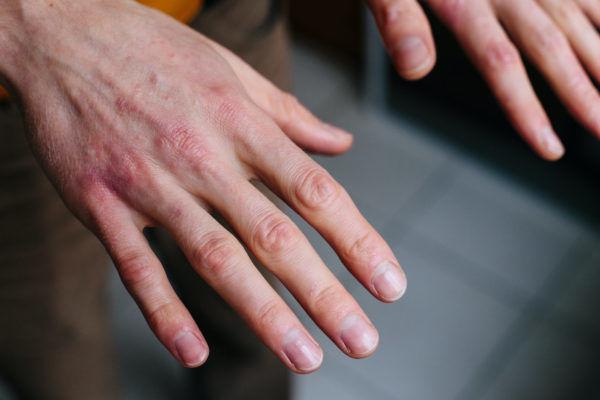 Clean-Hands Liquid Dispensing (Environmentally Sound Ideas): International Patent Portfolio
Clean-Hands Liquid Dispensing (Environmentally Sound Ideas): International Patent Portfolio
Diane applies BENGAY® to her husband’s aching back. He feels better, but her hands will smell all day. Jeff covers his girlfriend with sunscreen lotion. She will get a beautiful tan, but he has no place to clean the lotion from his hands. Sarah is staining an antique dresser. The dresser will look great, but she will also stain her hands and ruin her nails in the process. Ethan is stripping woodwork in a house renovation. The trim will look great, but his hands will be raw when the job is done. There are many instances in which we want to apply a liquid, cream, or lotion without getting it on our hands.
This portfolio addresses that need. It creates a hand-worn, pre-filled pouch or mitt that is used to apply any type of liquid to any type of surface. The user’s hand stays isolated from the liquid being applied. The mitt includes a reservoir that holds additional liquid that can be dispensed as needed – a squeeze pump draws fluid from the reservoir when required. And when the task is completed, the user’s hands are clean!
Patent Portfolio
- U.S. Patent No. 9,326,645: Personal cleaning system
- U.S. Patent No. 9,808,130: Personal cleaning system
- U.S. Patent No. 10,039,424: Personal cleaning system
- U.S. Patent No. 10,219,657: Personal cleaning system
- U.S. Patent No. 11,234,564: Personal cleaning system
- Canadian Patent Application 3038538: Personal cleaning system
- European Patent Application 3525651: Personal cleaning system
This portfolio will enable any manufacturer of flexible packaging or applicators to leapfrog the technologies of all of its competitors and offer a product that very effectively applies creams, lotions, and fluids to any surface while keeping the user’s hand clean!
BENGAY is a registered trademark of Johnson & Johnson Services, Inc.
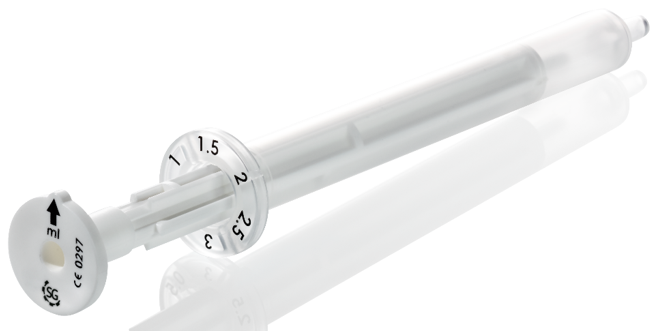 Exact Dosage Liquid Medicine Dispenser (Balda): International Patent Portfolio
Exact Dosage Liquid Medicine Dispenser (Balda): International Patent Portfolio
Administering exactly the correct dose of a liquid medicine – prescription or over-the counter – can be tricky. Especially in children, the correct dosage of cough medicine, pain killer, or other liquid drug is very important to prevent over-dosing. Pouring the liquid into a measuring cup is messy, inaccurate, and wasteful. There has to be a better, more accurate way to orally administer a liquid drug.
This portfolio addresses that challenge be creating a pipette that has rachets on the inside wall of the barrel at set intervals (every 0.5 ml, every 1.0 ml, for example) that are marked on the housing rim so the user can determine which rachet is the desired dosage. As the user draws back on the plunger, he or she can feel it pass each rachet in the barrel of the pipette. This is known as “haptic” or “tactile” feedback. The user receives feedback from the plunger as it passes each rachet on the inside of the barrel. Once the user has drawn exactly the correct dosage of liquid into the pipette, he or she depresses the plunger to its original position to deliver the liquid into the patient’s mouth. Since the tip of the piston is located at the tip of the barrel, there is almost no unadministered medicine left in the pipette. Additionally, the pipette does not come in direct contact with the recipient of the liquid drug, so it cannot become contaminated.
Patent Portfolio
- U.S. Patent No. 9,919,306: Dosing pipette
- U.S. Patent RE46721: Method and device for the metered dispensing of a medium
- European Patent 2934753: Dosing pipette (France, Germany, and Italy)
- European Patent 2129465: Method and device for the metered dispensing of a medium (France, Germany, Great Britain, Italy, Spain, Switzerland)
- Brazil Patent 112015014341: Dosing pipette
- Canada Patent 2895281: Dosing pipette
- China Patent 104994958: Dosing pipette
- German Patent Application 102013114336: Dosing pipette
The pipette covered by this portfolio consists of just two components, the barrel and the plunger, so it is very economical to manufacture, and the design is totally scalable based on the range of doses that are given for a particular liquid drug. This portfolio will enable any drug manufacturer or drug packaging manufacturer to bring to market the first major innovation in liquid medications in a century!
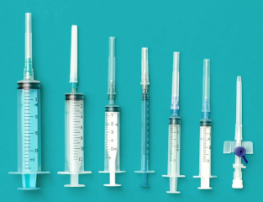 Pre-Filled Syringe (Balda Medical): U.S. and European Patent Portfolio
Pre-Filled Syringe (Balda Medical): U.S. and European Patent Portfolio
The syringe has been in use in medicine for almost 200 years. Connected to a hypodermic needle, it is used to inject liquid-form medicine into humans and animals, and to withdraw fluids such a blood or venom. To administer medicine, the standard procedure is to attach a hypodermic needle to a syringe, push the needle into a vial that containers the medicine, pull back on the plunger (or “piston” as it is also known), and draw the medicine into the syringe. The needle is then inserted into the patient, and when the piston is pushed down, the medicine is injected into the patient via the needle. But wait. There are many drugs and supplements that are taken by injection on a regular basis – these include insulin, blood thinners, pain remedies, cancer medications, fertility drugs, and anti-body blocking drugs for those with allergic diseases. There are also supplements such as Vitamin B that are taken at home by injection on a regular basis. If a patient is going to take the same medication on a regular basis, wouldn’t it be convenient if the syringe were shipped pre-filled with the insulin or other medication?
Those medications and supplements that are currently available in a syringe are shipped without the piston inserted in the syringe to prevent the contents of the syringe from being accidentally ejected from the cylinder of the syringe during shipping. To prevent his from happening, the piston is shipped in a separate package, and that is costly in terms of packaging and transportation costs. And if either package gets separated from the other, the user is stranded. This portfolio covers a pre-filled syringe that includes a receiving tube with a nozzle and a piston. The piston is inserted over the end of the receiving tube on the nozzle side. The design creates a pre-filled syringe that is delivered along with the piston as one convenient unit.
This portfolio consists of U.S. Patent No. 9,592,334 for a “Pre-fill syringe” and European Patent 2383005 for a “Filling injection device.” The European Patent is valid in Germany, the UK, France, Italy, Switzerland, and Spain. Any company that sells medicine or supplements that are taken by injection on a regular basis, or any pharmaceutical packaging manufacturer, can use this portfolio to create a highly convenient pre-filled syringe product.
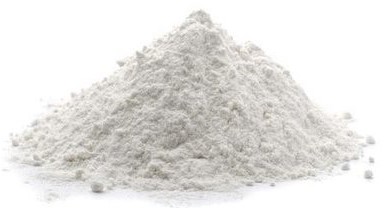 Granulate Dispenser (Balda Medical): International Patent Portfolio
Granulate Dispenser (Balda Medical): International Patent Portfolio
Not all drugs are dispensed as tablets or capsules, or in liquid form. Some drugs are dispensed in granulate form – from 200µm to 1mm diameter particles – and the drugs are dispensed by weight. They are homogeneously ground, relatively dry, particulate matter consisting of one or more substances that are grouted to consistent granular units. They may include additives to improve taste. Granular drugs are taken orally by pressing them into tablets, or they are taken dissolved in liquids to improve absorption. Granular drugs are most often prescribed for children as well as geriatric patients. The challenge for the patient or caregiver is dispensing exactly the correct weight of granular drug – not an issue when taking tablets or capsules.
This international patent portfolio addresses the challenge of dispensing exactly the correct weight of a granular drug. The portfolio describes a dispenser for granular drugs that provides gravity flow of the granulates, but without the granulates disintegrating into small pieces under the influence of high pressure. The result is precise dosing with limited damage to the granulates that could cause clogging.
Patent Portfolio
- U.S. Patent Application 20200271501: A device for dosing and dispensing material and a method of operating such device
- European Patent Application 3685129: A device for dosing and dispensing material and a method of operating such device
- Japanese Patent 7022833: A device for dosing and dispensing material and a method of operating such device
- German Patent 202017106367: Device for metering and dispensing material
This international patent portfolio will enable any drug packaging supplier to offer an easier and more accurate method for patients and their caregivers to dispense drugs that come in granulate form. The dispenser can be provided by the pharmaceutical manufacturer with a supply of granular drug to ensure proper dosage of the prescribed drug, or it can be offered as a product that granular drug users buy and use to insure proper dosage for themselves or their charges. Both the U.S. and European patent applications give the acquirer of this portfolio the opportunity to further modify the invention by filing a continuation or divisional.
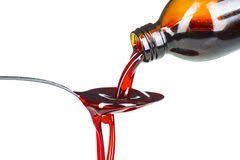 Measurable Liquid Dispenser (Ogretici): International Patent Portfolio
Measurable Liquid Dispenser (Ogretici): International Patent Portfolio
When dispensing drugs – either prescription or over-the-counter – or supplements that are in liquid form (cough medicine, pain killers, laxatives, and many others) it is a two-step process. Before you can take a liquid medicine, you have to measure out the correct dosage. And if you pour out too much, what do you do then? Wouldn’t it be convenient if liquid drugs and supplements came in containers that automatically dispensed exactly the correct dosage?
This patent portfolio addresses exactly that need by creating a container for liquids that dispenses a pre-set amount of liquid every time. A fixed or removeable dispenser is mounted on top of the main container, and when the main container is used, the dispenser fills with a fixed volume of liquid, dispensing exactly the right amount of liquid every time. In addition to drugs and supplements, this invention has applications for any concentrated liquids for which a fixed amount of fluid has to be dispensed such as gardening solutions, aquarium liquids, shampoo and other personal care and bathroom products, detergent, and food and beverage products. The invention works on both plastic and glass bottles, and it includes a one-way air valve for plastic bottles and a child-proof locking mechanism that makes it safe for use with prescription drugs and hazardous liquids.
Liquid Dispenser Portfolio
- Great Britain Patent 2586441: Dispenser
- U.S. Patent Application 17/619,545: Dispenser
- PCT Patent Application 2020260856: Dispenser
- European Patent Application 20734270: Dispenser
- China Patent Application 202080046643: Dispenser
- Canada Patent Application 3144828: Dispenser
- India Patent Application 202147059921: Dispenser
- Kenya Patent Application 20213970: Dispenser
- Russia Patent Application 2022101330: Dispenser
The acquirer of this portfolio will be able to introduce a new generation of container for liquids that need to be dispensed in pre-set amounts, and the acquirer can use the PCT Patent Application to file for additional patents in nations around the world.
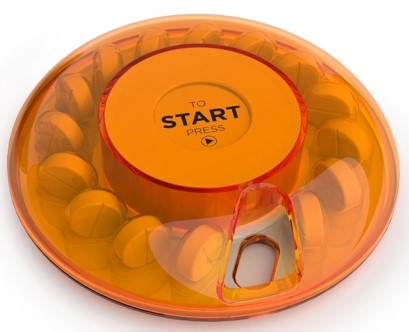 Smart Drug Dispenser (Pill Development Group): U.S. Patent Portfolio
Smart Drug Dispenser (Pill Development Group): U.S. Patent Portfolio
Opioid addiction has become an epidemic in the U.S. Many patients who were prescribed opioid drugs to treat pain became addicted. Others illegally acquire opioid drugs. The result is the same – ruined lives and overdose deaths – over 100,000 in 2021! In addition to the opioid crisis, there are all the Americans – especially older citizens – who are on prescription drugs, but forget to take a prescribed drug, or forget they took the drug and accidentally double-dose. There has to be a technology by which a prescribed drug is made available to a patient when he or she needs it, and at no other time. A technology that does NOT enable a patient – accidentally or purposely – to overdose!
This portfolio addresses this issue head-on by creating a smart pill dispenser that will hold any number of pills to match a prescription – 30, for example, if the pill is to be taken once a day for one month – that are held in a two-piece clamshell container. At a time interval determined by the prescription, a motor unlocks the container and it can be advanced to expose the next dose of medication. The patient takes that pill and nothing happens until it is time for the next dose. The patient cannot advance to the next pill until the time interval has passed, so he or she cannot overdose. While the technology applies to any prescription drug, it is especially valuable to patients taking potentially addictive drugs as it prevents them from taking more than the prescribed dose. Additionally, data capture of the usage of potentially addictive medications can be used to determine prescribing patterns. Better packaging of prescribed medications can also prevent children from having access to an entire bottle of medication with disastrous consequences.
Patent Portfolio
- U.S. Patent No. 9,283,150: Pill dispensing system
- U.S. Patent No. 10,653,584: Tablet and capsule dispensing assembly
- U.S. Patent No. 10,772,805: Tablet and capsule dispensing assembly
- U.S. Patent No. 11,053,065: Tablet and capsule dispensing assembly
- U.S. Patent No. 11,116,698: Method of installing and removing a rotation mechanism within pill dispensing assemblies
This portfolio will enable a drug packaging or pharmaceuticals manufacturer to offer a practical, affordable, and effective solution to overdosing of opioid and other addictive drugs, as well as packaging that will help older patients keep track of the drugs they took and need to take, and prevent a drug from being taken by children. The portfolio also includes claims that significantly reduce manufacturing costs. Proof-of-concept models are available upon request from the invention team.
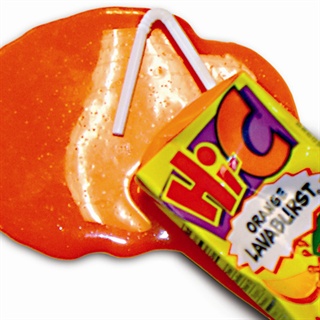 Spill-Proof Straw (Fuinso Innotech): U.S. Patent Application 20200288894
Spill-Proof Straw (Fuinso Innotech): U.S. Patent Application 20200288894
How many gallons of milk, juice, and soda were never consumed because the beverage was spilled onto the table, countertop, lap, or floor? It is a common event. A child – and, all too often, an adult – inserts a straw into a drink container and OOPS! In addition to the aggravation and work to clean up the mess, there is the cost of the wasted, unconsumed beverage.
This patent application addresses this very common problem by creating a three-ended, Y-shape or T-shape drinking straw. These Y or T-shape straws – when they are inserted into the drink container – dramatically reduce spills because of the two open ends. The two ends create air pressure that pushes the liquid downward, preventing it from rising up and coming out the end of the straw. To drink using the straw, one of the two open ends of the straw is closed off using a thumb or finger, or a lid or cap can be used to remove existing air pressure from the remaining end, allowing the liquid to be drawn up from the container. If a container using this straw is knocked over, there will be no spill.
These Y and T-shape straws can be used with existing beverage containers or can be integrated on an as-needed basis, and can be pre-fitted or post-fitted to beverage packages of different sizes and shapes. These new, patented straws can be made from plastic, paper, or other materials.
U.S. Patent Application 20200288894 for “Spill proof beverage packaging” will enable any beverage packaging manufacturer to offer its customers an entirely new generation of straws that prevent messy, annoying, and expensive spills.
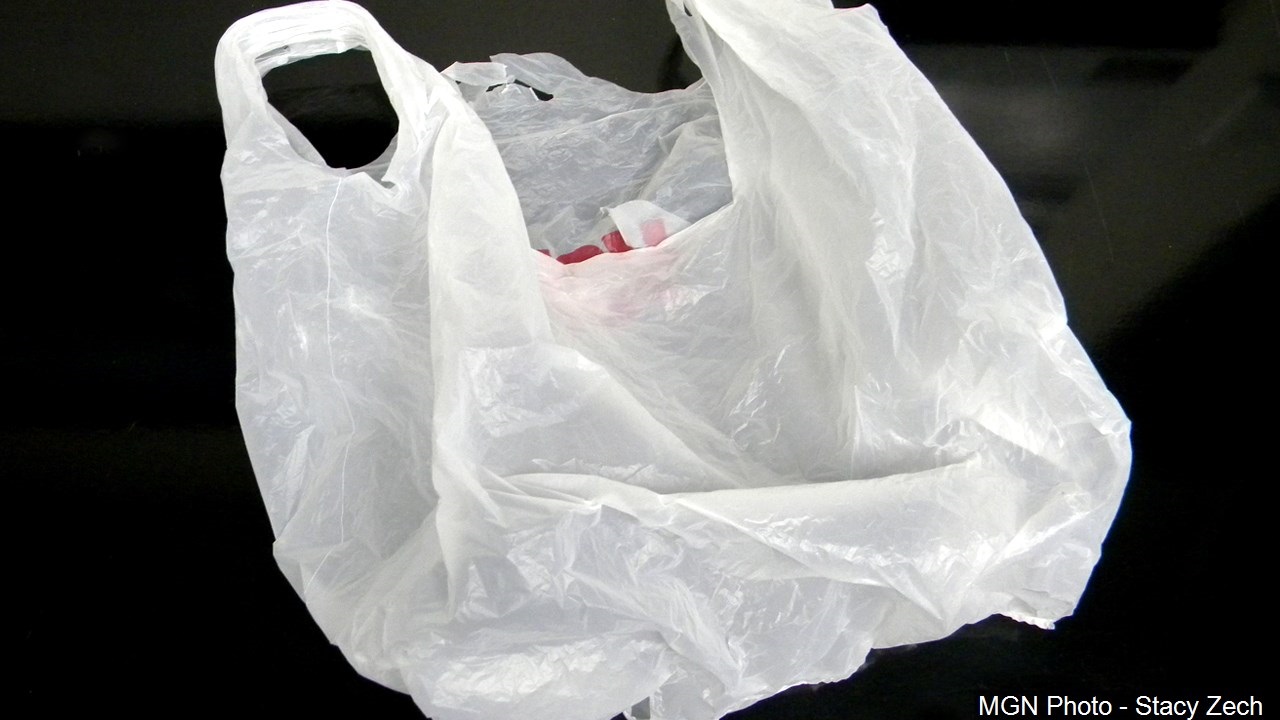 Next-Generation Grocery Bag Replacement (Bojaxhi): U.S. and PCT Patent Applications
Next-Generation Grocery Bag Replacement (Bojaxhi): U.S. and PCT Patent Applications
Disposable polyethylene grocery bags are popular. They are inexpensive, light weight, and durable. But they eventually end up in a land fill. Reusable grocery bags do not end up in a land fill, but they have to be toted back and forth from store to home and home to store, and they get dirty over time, and they come in contact with all sorts of possibly infected objects and surfaces.
This portfolio creates an alternative to the disposable plastic grocery bag and the reusable woven-fabric grocery bag – a grocery bag that is made from cotton gauze. The bag is used once, and then it can either be used as a rag for cleaning, or it can be disposed. And since it is 100% organic, it is fully decomposable. Cotton gauze is inexpensive, and it is lightweight yet durable. It can be made of lower grade cotton – not the grade used for clothing or linens. Most importantly, it is 100% natural and 100% biodegradable. Grocery stores and other retailers who want to supply disposable bags for their customers, but are in states or municipalities that have outlawed plastic bags, can give their customers free, disposable bags using the technology covered by this portfolio!
Patent Portfolio
- U.S. Patent No. D915219: Grocery bag
- U.S. Patent Application 20200281335: Single use gauze grocery bag
- U.S. Patent Application 20200283197: Natural single use 100% gauze grocery bag
- PCT Patent Application 2020180802: Natural single use 100% gauze grocery bag
This portfolio will enable any packaging manufacturer to offer a next-generation, affordable, attractive, single-use grocery bag that overcomes the drawbacks of disposable plastic grocery bags and reusable woven-fabric bags. The grocery bag created by this patented technology will actually have a smaller carbon footprint than either the plastic or woven-fabric grocery bags currently in use!
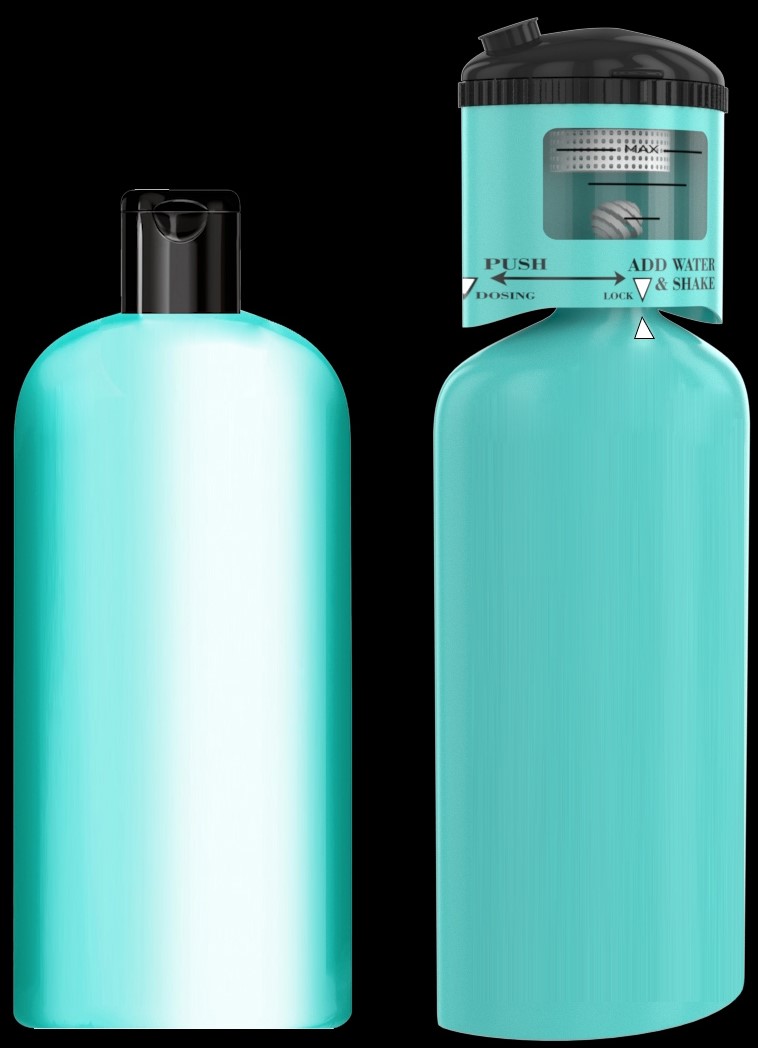 Improved Shampoo Container (Markline): U.S. Patent and European Patent Application
Improved Shampoo Container (Markline): U.S. Patent and European Patent Application
Everyone has his or her favorite shampoo. That’s why there are dozens of brands of shampoo on the market. The problem with all shampoos, however, is the same: They all come full-strength. The full-strength shampoo is applied directly and unevenly to the hair (not good), and water is then added from the shower or the bath to dilute the shampoo to a usable consistency. Why not dilute the shampoo first? Why not apply a mix of shampoo and water to the hair that is exactly what the customer wants and needs? Maybe the next major improvement in shampoo is not the shampoo itself, but the container it comes in?
This patent portfolio addresses exactly that need by creating the next major improvement in shampoo – a better shampoo container! This patent creates an additional container that becomes part of already existing or newly designed shampoo packaging in which the consumer creates an appropriate mixture of shampoo and water just before shampooing, so the shampoo is non-aggressive to the user's scalp and ready to use. By adjusting how much water he or she adds, the user can create just the right shampoo/water mix for his or her hair. U.S. Patent No. 10,780,407 and European Patent Application 3413769 for a “Method and shaker for mixing liquids” will enable any shampoo manufacturer or supplier of bottles to shampoo manufacturers to offer the first real innovation in shampoo in a century, and do so with patent protection on two continents.
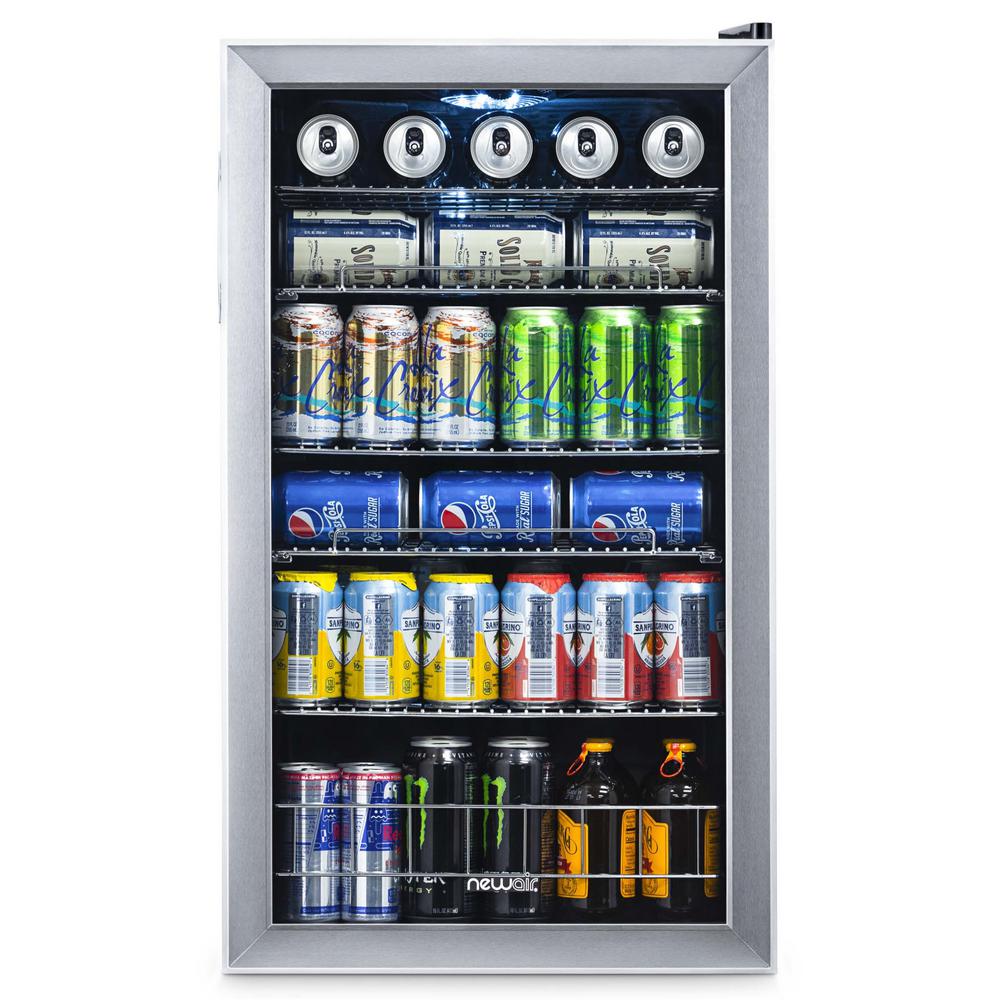 Sanitary Wipe Dispenser for Beverage Cans (Roy): U.S. Patent No. 10,709,302
Sanitary Wipe Dispenser for Beverage Cans (Roy): U.S. Patent No. 10,709,302
The Surgeon General has three Ws of advice during the current Coronavirus pandemic: “Watch your distance. Wash your hands. Wear a mask.” Good advice but we suggest a fourth W: Wipe that beverage can before drinking from it. We all enjoy a cold drink from time to time – soda, beer or juice – and they often come in convenient cans. The question everyone needs to ask before drinking from that can is: “Who touched it before I did?”
This patent addresses the needs of this once-in-a-century pandemic – how to quickly and easily clean the top of a beverage can with a sanitary wipe before drinking from it – but it also addresses a need that has existed for decades. Some retailers have hand sanitizers at locations in the store, but they do not address the specific problem of dirty soda cans. This patent creates a brilliantly simple solution – a sanitary wipe dispenser that is mounted on the refrigeration unit that holds the cold, canned beverages. Select a cold drink, pull out a wipe from the dispenser, clean the top of the can, and enjoy that beverage knowing you have significantly reduced any contaminants on the top of the can. Once this pandemic has passed, cleaning the tops of beverage cans will be a common practice just as it should have been pre-pandemic.
U.S. Patent No. 10,709,302 for a “Sanitary wipe apparatus for use on a beverage can” would be a critical acquisition for any manufacturer of wipes seeking to expand its product reach or for any supplier to the retail sector looking for a new market segment with a U.S. monopoly for the next 15 years! The original paper towel dispenser was a very simple idea - an apparatus that dispensed paper towels in bathrooms, kitchens, and other locations where they were needed. From that idea was created a new business segment. This patent has the potential to create a permanent new market segment in the retail sector.
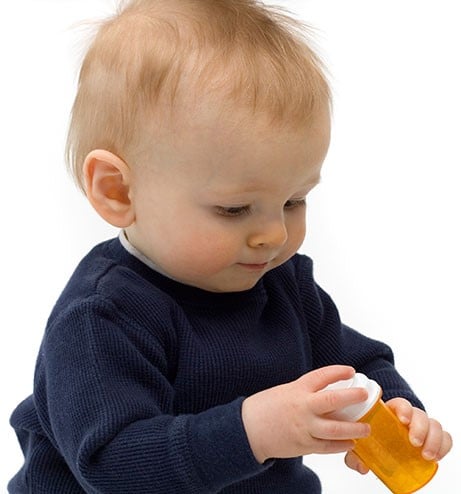 Child-Proof Pouch for Medical Cannabis (Bodner): U.S. Patent No. 9,365,325
Child-Proof Pouch for Medical Cannabis (Bodner): U.S. Patent No. 9,365,325
The growing medical cannabis industry faces the same challenge that conventional drug producers face – keeping their medications from being accidentally consumed by a curious child. This patent creates a child-proof opening for a plastic pouch. It uses a “removal tool” that sits between two edges of the pouch to form an opening. A handle is attached to one edge of the pouch, and it includes an opening that is sized to receive the removal tool. A second handle is attached to the other edge of the pouch, and it fits into a cavity in the first handle that interlocks with the other handle. When the removal tool is slid up, the pouch opens, and when it is slid down, the pouch opening is closed. The pouch cannot be opened from the top as other pouches can, so only those who understand the use of the removal tool can access the contents of the bag.
U.S. Patent No. 9,365,325 for "Child proof containers" would be a critical acquisition for any medical cannabis producer or any packaging manufacturer selling to the fast-growing medical cannabis industry. The technology can easily be adapted to the plastic pouches currently on the market – such as the zip-lock units – to create a new generation of child-proof pouches for medical cannabis that can be displayed on retail fixtures on hooks and can be constructed of mylar or clear plastic.
HandyScore® Cardboard Scoring Device (SPS): U.S. Patent and Registered U.S. Trademark
This portfolio includes both U.S. Patent No. 8,844,144 for a "Handheld Cardboard Scoring Device" and U.S. Trademark Serial No. 8707922 for "HandyScore," the brand name of the product covered by the Patent. The invention is ingeniously simple. It is a scoring tool that enables the user to score a sheet of cardboard and create a cardboard box of any size, shape or dimensions. This is a product that will prove indispensable to any business that ships out products! HandyScore is already being successfully sold online by the patentee, but the patentee and trademark owner have decided to sell or license the patent to a company that can take the product national.
This portfolio is an ideal, strategic acquisition for any office supply retailer or distributor, or any office supplies manufacturer. Included is the source of a current manufacturer of the product, so the new patentee can go to market with HandyScore immediately!
HandyScore is a registered trademark of SPS Packaging Supplies, Inc.
Patent Brokerage Prospectus: Contact [email protected] to receive an analysis of each portfolio that includes:
- Executive Summary
- Patent Overview and History
- Technology and Investment Summary
- Market Research
- Company Analysis
- Illustrative Evidence of Use (if applicable)
We offer patents in these technologies:
- Agricultural
- Artificial Intelligence
- Automotive/Vehicular
- Aviation
- Banking/Financial Services
- Beverages/Foods/Nutritional Products
- Boat and Marine
- Cannabis and Medical Marijuana
- Construction/Building Trades
- Consumer Electronics
- Consumer Products
- Digital Currency/Cryptocurrency
- Drones/UAVs
- E-Cigarette & Vaping Technology
- E-Commerce
- Education & Training
- Energy/Power Generation
- Health and Beauty Products (HBP)
- Human Resources
- IoT Patents/Internet of Things
- Manufacturing
- Medical Electronics and Devices
- Mining/Drilling
- Mobile/Wireless
- Network/Location-Based Services
- Optics/Displays/Video/LED
- OTT Patents/Over-the-Top
- Packaging
- PCs and Notebooks
- Pharmaceuticals
- Robotics/Automation
- Semiconductor
- Shoe & Apparel
- Smart Home/Smart Office
- Social Media
- Software, Apps, and Architecture
- Sports/Sporting Goods
- Telecommunications/IP Telephony
- Warehousing/Material Handling
- Other
- Go to Patent Index
- Return to Patent MarketPlace




